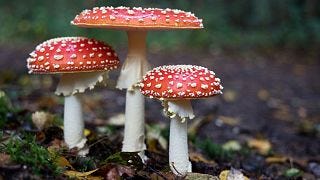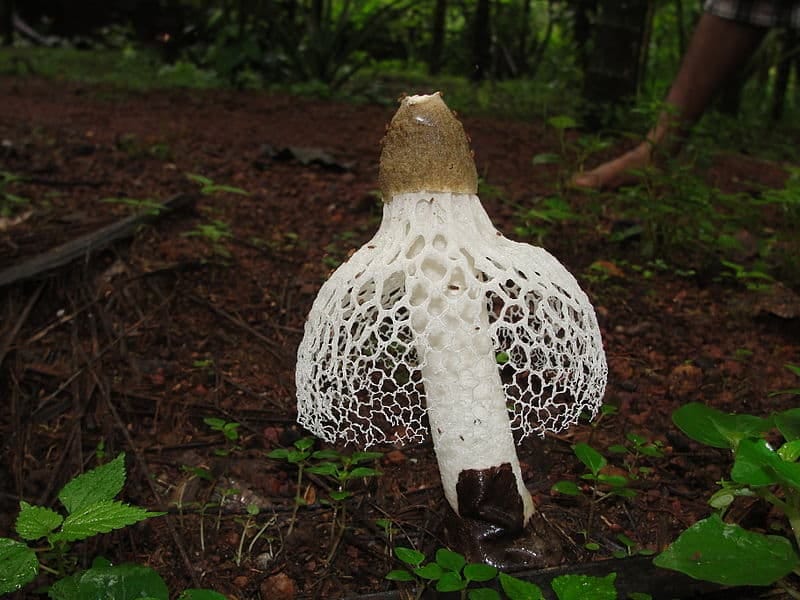How does the world’s first fungi-powered carbon removal project actually work?
Fungi Friday's - February 24th, 2022 - Issue #69
Happy Friday, Fungi Friday fam. We’re back, yet again!
It’s been a busy week here in the life of the Iowa Fungi’s. First, made a quick trip down to the farm last weekend and prepped the trailer for the big move. Then, made some calls and scheduled the power to be turned back on at the new location. Now, it’s hard to believe we’re just one week away from placing the first spawn order of the year, mushroom season is almost back! Going to be a busy month of March getting everything lined up to where it needs to be, and then it’ll be off to the races. It’s going to be a big year, I promise!
That’s plenty of hype and teasers for the time being though… let’s jump right in!
Funga: How does the world’s first fungi-powered carbon removal project work?
Feature number one this week covers Funga, a project that uses fungi to remove carbon from the atmosphere and replace plastic products with mycelium-based alternatives. The project collects agricultural waste and wood chips to grow mycelium, which is then used to make a bio-based material. The material can be used to replace traditional plastic products and can also remove carbon from the atmosphere by burying the material in soil or using it in building projects.
Funga is partnering with companies to replace their plastic products with mycelium-based alternatives and to use the mycelium material in building projects. The project is a sustainable and innovative solution to plastic waste and carbon emissions.
The Funga team is based in the Netherlands and is working with researchers and businesses to scale up the project. Funga is the world's first fungi-powered carbon removal project and is a promising solution to the growing problem of plastic waste and carbon emissions.
The mycelium material produced by Funga is biodegradable and can be grown using low-energy inputs. This makes it a sustainable alternative to traditional plastic products that can take hundreds of years to degrade and contribute to carbon emissions during production. Funga is an exciting project that has the potential to revolutionize the way we produce and dispose of plastic products.
Plantwatch: the mushroom that is both delicacy and predator
For feature number two of the day, we've got a wild story for you: there's a mushroom out there that's both a delicious delicacy and a deadly predator.
The mushroom in question is called the veiled lady, and it's known for its delicate flavor and unusual appearance. But researchers have discovered that the veiled lady is also a predator, feeding on other mushrooms and even parasitizing the roots of trees.
The veiled lady is part of a group of mushrooms called mycorrhizal fungi, which form symbiotic relationships with plants. But the veiled lady takes things a step further by actually consuming other fungi and using their nutrients to benefit its plant host.
This discovery has important implications for our understanding of how ecosystems function, as well as for the culinary world. While the veiled lady is considered a prized delicacy in some parts of the world, its predatory behavior means that it could have negative impacts on other fungi and plant species.
So next time you're out foraging for mushrooms, keep an eye out for the veiled lady - she might be more than just a tasty treat!
Fungi, Zombies and Climate Change: What’s the Link?
For our final feature of the week, let’s talk Zombies! After all, The Last of Us has been all the rage lately anyways, right? This article discusses the link between climate change, fungi, and the emergence of "zombie-like" behavior in animals. Climate change is causing shifts in fungal distribution and interactions, which can have a range of effects on animal behavior and health.
For example, some fungi produce toxins that can cause neurological damage in animals, leading to behavior changes that resemble zombie-like symptoms. Additionally, climate change is altering the distribution of fungi that can infect and kill animals, such as the chytrid fungus that has caused declines in amphibian populations worldwide.
The article emphasizes the importance of understanding the complex relationships between fungi, animals, and the environment in the context of climate change. This includes studying the effects of fungal toxins on animal behavior and the spread of fungal diseases.
Overall, the article highlights the need for a more holistic approach to understanding the impacts of climate change on ecosystems, one that considers the often-overlooked role of fungi in shaping animal behavior and health.
Want even more? Here are some other interesting, mushroom focused reads of the week:
Psychedelic Drugs Have Huge Therapeutic Potential. An Expert Explains Why.
Mushroom coffee is the latest obsession in the great shroom boom
Love mushrooms? California is having an epic 'supershroom' season
Mushrooms For Health: 7 Surprising Benefits You May Not Know
Could magic mushrooms be an alternative to medical assistance in dying?
As always, thank you for reading this weeks edition of Fungi Friday’s! We are especially thankful for all of you who spend your Friday lunch with us, learning about all things Fungi. If you enjoyed what you found, please feel free to forward to friends also interested in the Fungi Community!
And if you were forwarded this post and enjoyed what you found, please subscribe below:




